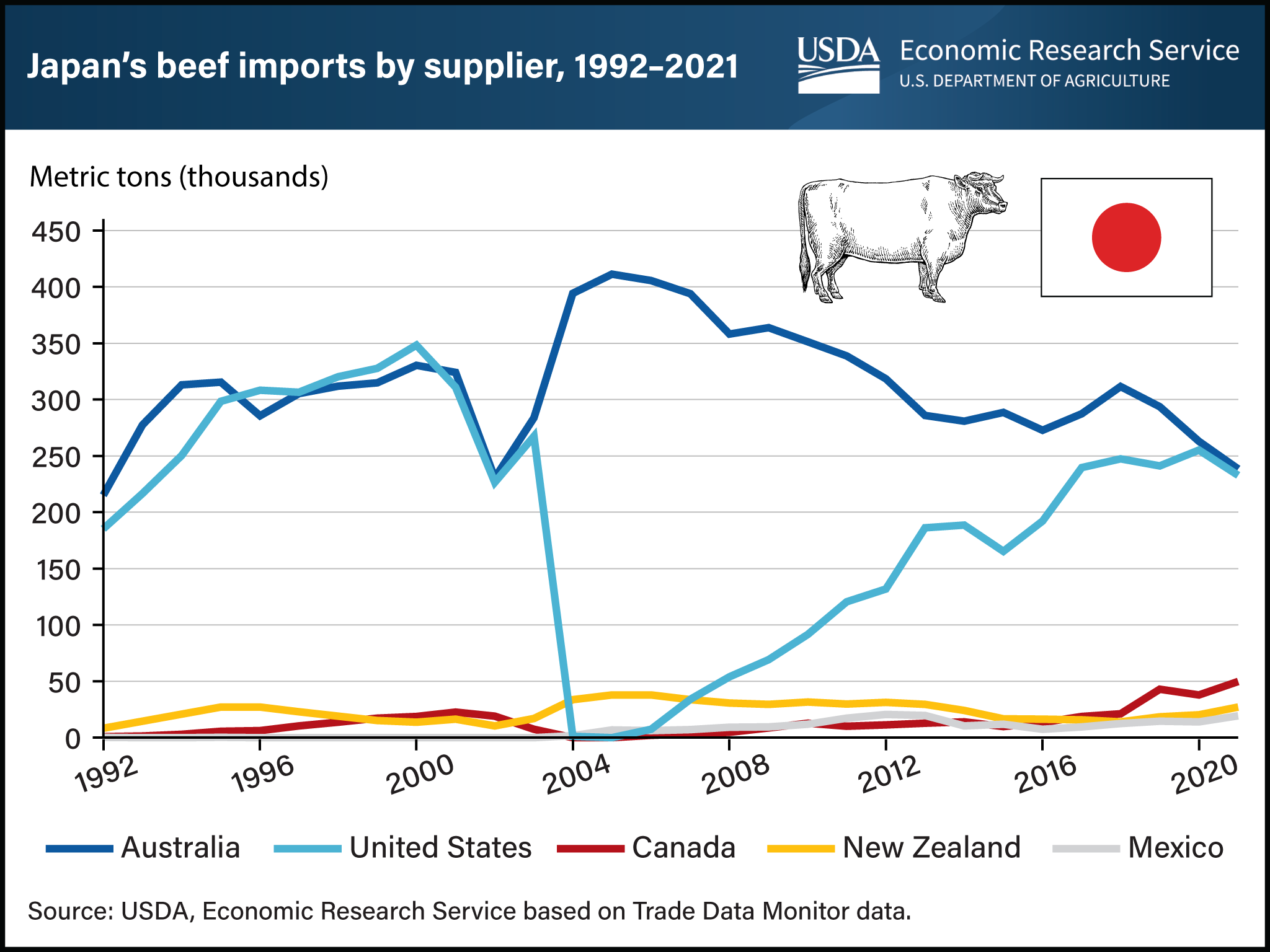United States reclaims status as one of Japan’s top beef suppliers after 2004 import embargo
- by Ethan Sabala and Eric C. Davis
- 7/18/2023

The United States has long been a top supplier of beef to Japan. U.S. market share collapsed in 2004 after a single case of bovine spongiform encephalopathy (BSE), commonly referred to as “mad cow disease,” was detected in a cow shipped from Canada to the United States. In response, Japan placed an embargo on all U.S. and Canadian beef products. Japan reduced its imports of U.S. beef to almost zero in 2004 after importing 267,000 metric tons the previous year. During those two years, the U.S. share of Japan’s beef imports fell from 46.4 percent in 2003 to nearly zero in 2004, and Japan increased its imports of beef from Australia, which had never reported a case of BSE. In 2006, Japan began phasing out the ban on U.S. beef and fully lifted it in May 2019. Over this period, U.S. beef imports rebounded nearly to pre-ban levels, shipping 233,000 metric tons to Japan in 2021. Even so, Australia still supplied most of Japan’s beef imports (40.7 percent), followed by the United States (39.8 percent), Canada (8.5 percent), New Zealand (4.7 percent), and Mexico (3.3 percent). Recently ratified trade agreements between Japan and these partner countries are expected to contribute to changes in Japan’s market for imported beef. Researchers at USDA’s Economic Research Service (ERS) estimate that by 2033, annual scheduled reductions in Japan’s import tariffs will increase imports of U.S. beef by 27 percent, or $413.8 million, from 2018 levels. This chart first appeared in the ERS report, The Impact of Japan’s Trade Agreements and Safeguard Renegotiation on U.S. Access to Japan’s Beef Market, June 2023.
We’d welcome your feedback!
Would you be willing to answer a few quick questions about your experience?

